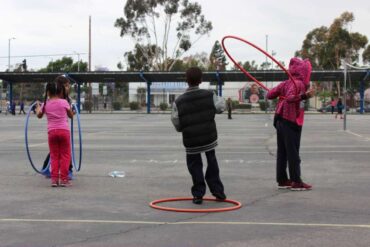Brighten Up Your Home: A Parent’s Guide to Stained Glass Window Art
Hello there, creative families! Are you looking to splash a little color into your home decor? Well, you’re in the right place! Stained Glass Window Art is a timeless craft that can bring life and vibrancy to any room. It’s a fun activity that allows parents and children to bond over creating beautiful art. Whether you’re an experienced DIYer or a crafty novice eager to learn, this guide is for you!
But wait! You might be thinking, “Isn’t stained glass complicated?” Not to worry. Our guide will walk you through every step, ensuring that the process is not only rewarding but also super enjoyable. We’re here to prove that with a pinch of creativity and a sprinkle of patience, anyone can make stained glass masterpieces!
What is Stained Glass Window Art?
Stained glass window art dates back to ancient times and has been decorating the windows of churches, cathedrals, and grand buildings for centuries. But, you don’t need to live in a castle to enjoy its beauty. Stained glass art is essentially pieces of colored glass cut and arranged in patterns or pictures, often held together by lead strips (called cames) and framed in metal. Today, there are many materials and methods available that make stained glass art accessible and safe for crafty parents and their kids.
Benefits of Stained Glass Crafting for Families
- Encourages Creativity: Selecting colors and designing patterns stimulates the imagination.
- Develops Fine Motor Skills: Handling and positioning the glass pieces can improve dexterity.
- Teaches Patience: This step-by-step process is great for learning the importance of taking your time.
- Enhances Focus: Concentrating on a craft project is a productive way to practice attention to detail.
- Builds Confidence: Completing a project from start to finish can be incredibly satisfying and empowering.
Getting Started with Your Stained Glass Project
Before diving into your first stained glass project, there are a few things you’ll need to get started. Here’s a quick rundown of essentials:
Materials and Tools
- Colored Glass: You can purchase colored glass sheets from a craft store or a specialized stained glass shop.
- Glass Cutter: This tool will help you cut your glass pieces to the desired shapes and sizes.
- Lead Came or Copper Foil: These are used to hold the glass pieces together. Copper foil is typically more beginner-friendly.
- Soldering Iron: For fusing the cames or foils between glass pieces.
- Grinder: Smoothing the edges of the glass pieces can be achieved with a glass grinder.
Remember, safety comes first, especially when working with children! Always wear protective gear such as gloves and safety glasses, and keep the workspace clean and organized.
Designing Your Stained Glass Artwork
Creativity is key for the design phase. Here are some tips on how to plan a design:
- Inspiration: Look around your home for patterns or themes that you love. Nature, geometric patterns, and even your child’s drawings can be great sources of inspiration.
- Sketch It Out: Once you have an idea, sketch it onto paper. Think about the colors you’d like to include and where the light will be coming from when the final piece is displayed.
Stay tuned for the next section where we’ll guide you through the cutting, assembling, and finishing touches of creating your stained glass art. There’s no need to rush; the journey in crafting stained glass is just as delightful as the radiant artwork you’ll hang in your window. So gather your materials, gather your little ones, and gear up to add some colorful flair to your home!
Remember, whether it’s a sunny day full of laughter or a quiet evening of contemplation, stained glass window art is a fabulous way to make memories that shine through your décor. Let’s get started on this vivid adventure together!

5 Things Parents Should Know in Preparing for Stained Glass Window Art
Embarking on a stained glass project with your kids can be an enriching experience. Here are five essential things parents should know as you prepare for this artistic journey:
1. Understanding the Complexity and Time Investment
Creating stained glass art is a process that can’t be rushed. When planning your project, consider the complexity of the design and the amount of time it will take from start to finish. Simpler patterns are perfect for beginners and can be more suitable when working with youngsters. Set realistic goals and take pleasure in the progress, no matter how gradual it may be.
2. Prioritizing Safety Above All
Stained glass art involves materials that can be sharp and tools that require careful handling. Always supervise children closely and make sure they’re using kid-friendly alternatives, such as pre-cut glass pieces and non-toxic, lead-free materials whenever possible. Prioritize a safe and tidy workspace free from potential hazards.
3. Selecting the Right Materials
Not all glass is created equal, especially when it comes to stained glass projects. Look for glass pieces that have vibrant colors and textures that will enhance your design. Additionally, the right type of solder and flux can make a significant difference in the final look and structural integrity of your art.
4. Investing in Quality Tools
Quality tools can make or break your stained glass experience. A good glass cutter, running pliers, and a reliable soldering iron are worth investing in. These will not only make your project easier and safer but also ensure that the finished product is something you’re proud to display.
5. Embracing Learning and Practice
Stained glass art is both an art and a craft. As such, it requires patience and practice to master. Be prepared for a learning curve and occasional mishaps. Encourage your children to embrace mistakes as part of the learning process. With time, you and your kids will improve and enjoy the creation process as much as the lovely artworks you produce.
Next Steps in Stained Glass Crafting: Cutting and Assembling
After gathering your supplies and finalizing your design, it’s time to cut your glass into the shapes that will fit together like a jigsaw puzzle. Using a glass cutter, score along the outline of your design and gently break the glass with running pliers or your hands, being sure to keep those gloves on! Smooth the edges with a grinder or a hand file to help the pieces fit snugly.
Next, apply copper foil or lead came to the edges of the glass pieces. This will prepare them for soldering, which joins the pieces into a complete picture. Carefully use a soldering iron to melt the solder over the foil or cames, connecting the pieces securely. Be mindful of the temperature of the iron, and always handle it with a steady hand.
Finishing touches include cleaning the glass, applying patina for an aged effect if desired, and polishing the metalwork until it gleams. You might also add a frame or hanging loops to display your masterpiece perfectly.
As your stained glass art catches the sunlight and casts vibrant hues around your home, take a moment to appreciate the hard work, creativity, and collaboration that went into creating such a piece. Stained glass window art is more than just a decorative element; it’s a testament to the joy and fulfillment of creating something beautiful as a family.
So, what are you waiting for? Gather up those coloring pages for inspiration, make a list of supplies, and step into the vibrant world of stained glass art with your little ones. It’s time to design, craft, and color your world one piece of glass at a time! Keep in mind the tips provided, and you’re sure to have a safe, enjoyable, and successful crafting experience.
See more great Things to Do with Kids in New Zealand here. For more information see here
Disclaimer
The articles available via our website provide general information only and we strongly urge readers to exercise caution and conduct their own thorough research and fact-checking. The information presented should not be taken as absolute truth, and, to the maximum extent permitted by law, we will not be held liable for any inaccuracies or errors in the content. It is essential for individuals to independently verify and validate the information before making any decisions or taking any actions based on the articles.




